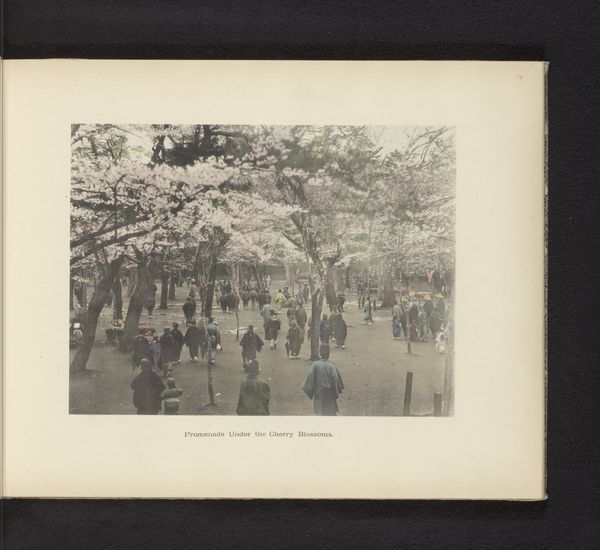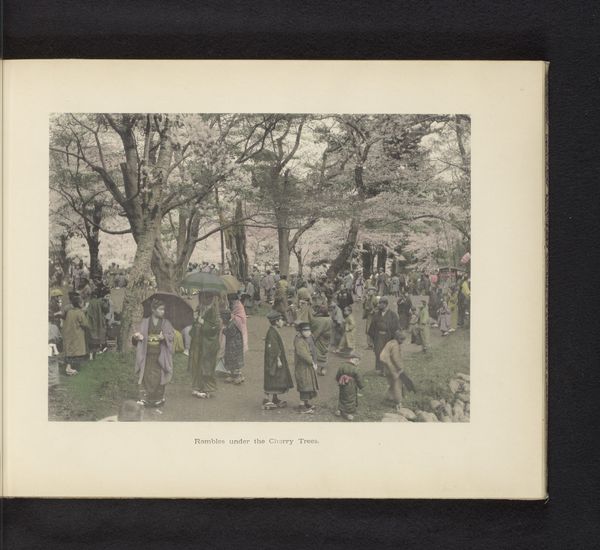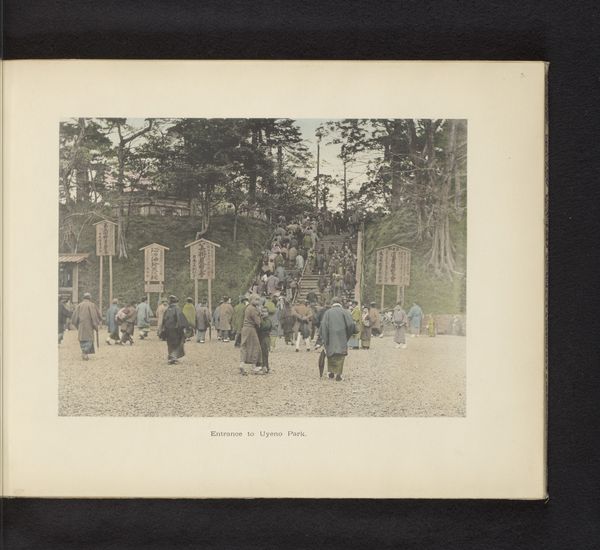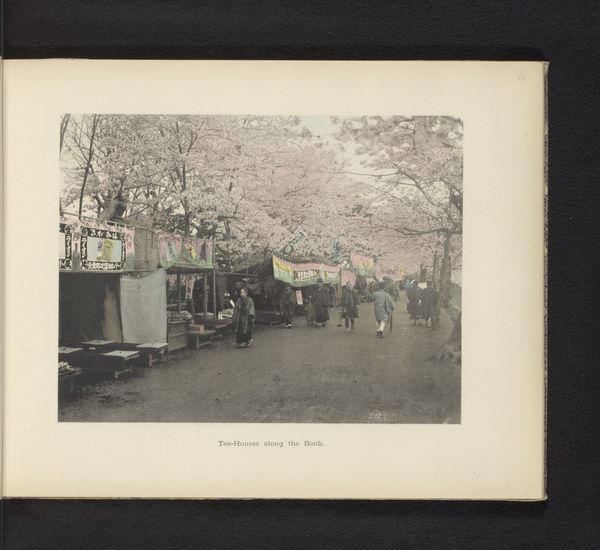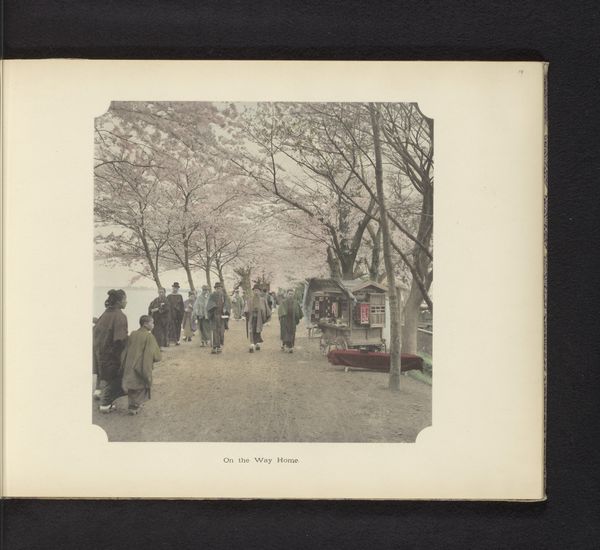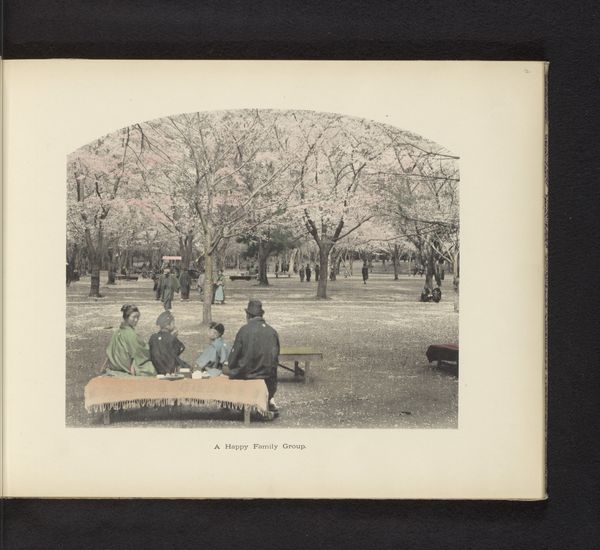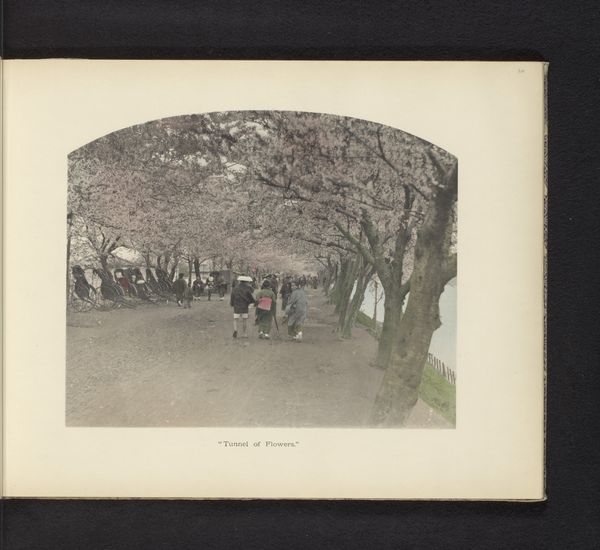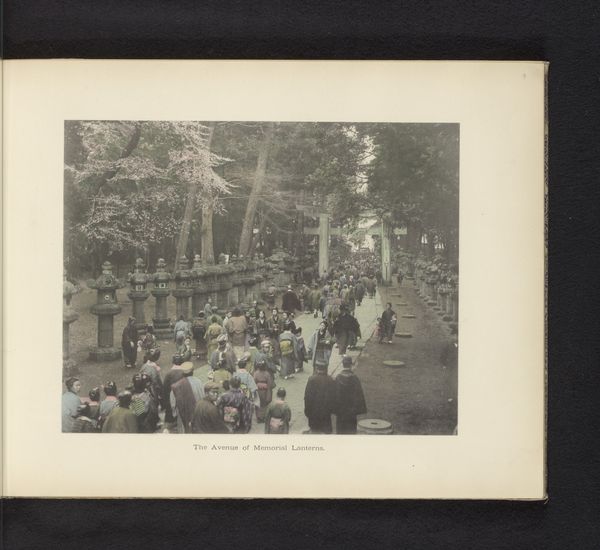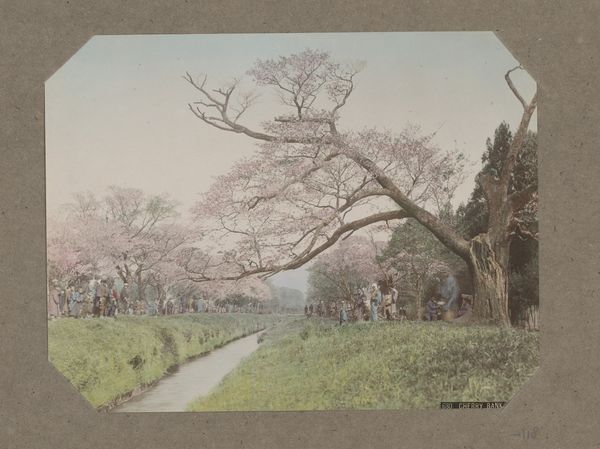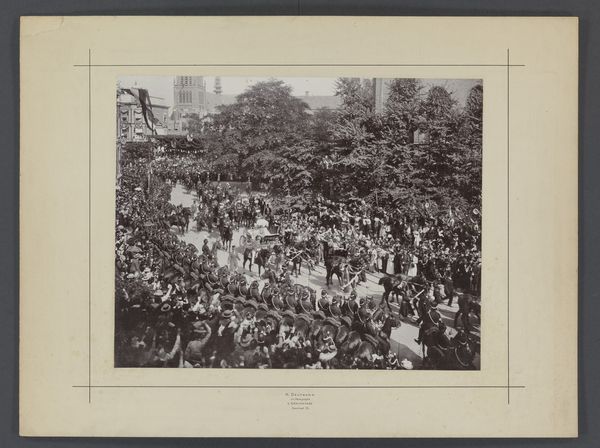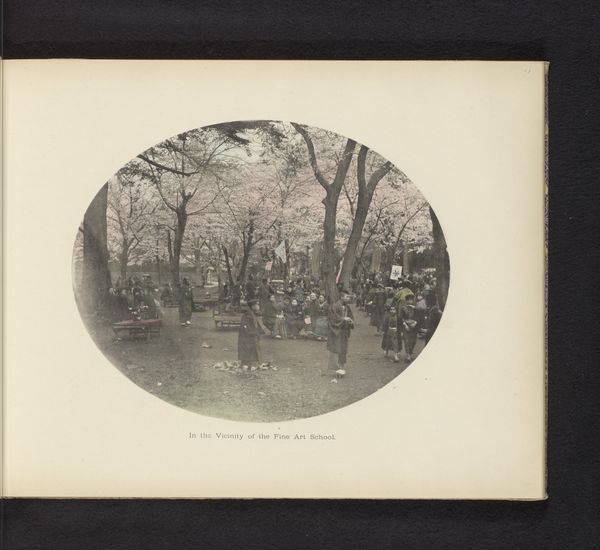
print, photography
# print
#
landscape
#
photography
Dimensions: height 230 mm, width 229 mm
Copyright: Rijks Museum: Open Domain
This photograph of the Tosho-gu Temple in Ueno Park, Tokyo, was created by Kazumasa Ogawa sometime between the late 19th and early 20th centuries. It’s a hand-colored albumen print, a process that starts with a photographic negative, then involves coating paper with egg white to create a glossy surface for the image. The process of hand-coloring then imbues the photograph with a new level of meaning. This isn't just a record of a place, but an interpretation. The soft pinks of the cherry blossoms, for instance, and the muted tones of the crowd, emphasize the beauty and tranquility of the scene. Ogawa was a pioneer in photographic reproduction, and a champion of new printing technologies. As Japan opened to the West, he blended traditional artistic skills with modern industrial methods, producing images that catered to both local and international markets. He was not alone - the image exemplifies how photography was not just a mechanical process, but a craft.
Comments
No comments
Be the first to comment and join the conversation on the ultimate creative platform.
